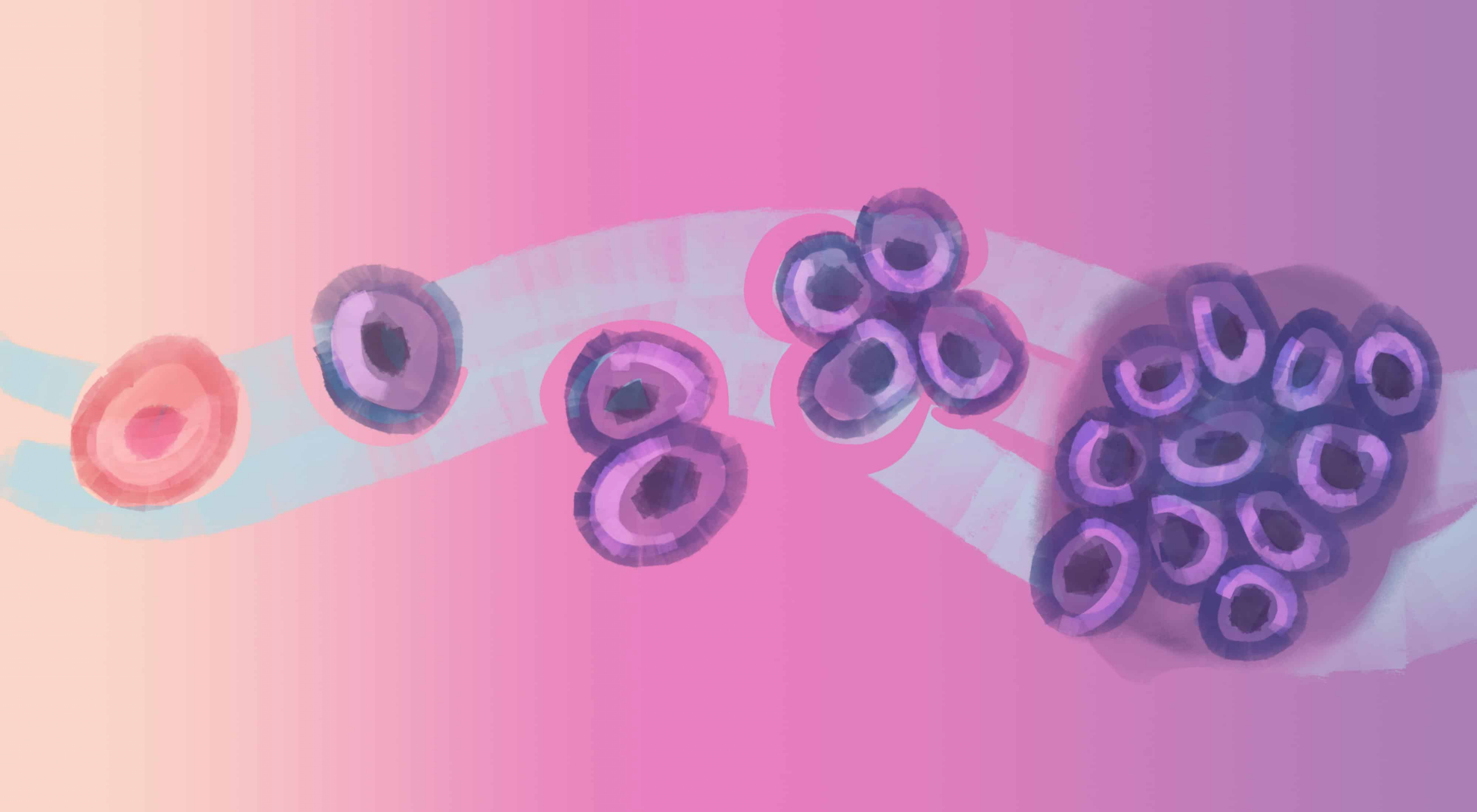YAP and TAZ are proteins that have long been recognized for their role in regulating transcription — a process in which the information in DNA is copied into RNA — and are particularly relevant in cancer development.
A recent study in Nature Communications led by Mandeep K. Gill in U of T’s Department of Biochemistry identified NUAK2 as a gene that could control YAP/TAZ activity.
In normally functioning cells, YAP and TAZ are responsible for forming and regenerating tissues. In tumours, however, these proteins are able to initiate and metastasize, or spread, cancer cells to other parts of the body, as well as initiate the tumours.
“The relatively recent discovery (roughly 10 years) of the so called ‘Hippo pathway’ which normally acts to limit excess cell growth and the demonstration that it is turned off in most cancers has provided a new target for the development of therapeutics,” explained Liliana Attisano, a principal investigator of the study also from the Department of Biochemistry, in an email to The Varsity.
The Hippo pathway is a process that controls tissue and organ development in mammals, especially in their size, by regulating cell growth and death, and controls the transcriptional activity of YAP and TAZ proteins.
The pathway can be activated by various factors, after which it engages its core cassette — a subunit made of enzymes known as kinases, which are involved in the movement of phosphate groups, or phosphorylation.
When a cascade of phosphorylation — the addition of a phosphate group — occurs in the cassette, YAP and TAZ are marked with phosphate groups and are targeted for degradation.
When the Hippo pathway is inactive, however, YAP and TAZ accumulate in the nucleus and latch on to the DNA-binding proteins in there, which can lead to cancer cell proliferation.
Attisano and her team discovered NUAK2 was found to encode a protein that results in even more YAP and TAZ getting into the cell’s nucleus to further promote abnormal cell growth.
The researchers started by conducting studies in breast cancer cells and were able to identify the kinase NUAK2 as a positive regulator of YAP and TAZ activity.
According to the study, “NUAK2 functions in a kinase-dependent manner to promote nuclear YAP/TAZ localization and activity” and promotes YAP and TAZ activity in a positive feedback loop.
A decrease in NUAK2 is therefore found to reduce transcriptional activity and the quantity of YAP and TAZ in the nucleus. As well, kinase-deficient NUAK2 was found to restore YAP and TAZ localization in the nucleus, which deemed NUAK2 an activator of YAP and TAZ activity.
“We found a way to restore the activity of the pathway (by removing or blocking NUAK2 activity),” wrote Attisano.
A lack of NAUK2 in cells showed a reduced cell growth and robust tumour growth in mice.
Tests were conducted on bladder cancer cells to determine the implications for human tumour progression. Larger increases of NUAK2 were found in high-grade samples that came from patients who had experienced a relapse.
These findings could be applied to cancer treatments as blocking the expression of or inhibiting NUAK2, YAP, and TAZ appears to restore Hippo pathway activity and cell growth, thus limiting tumour progression.
“There is still a long road ahead,” wrote Attisano. “But the next step would be [to] develop specific and potent compounds that can be tested in mouse and human organoid models with the long-term goal of… identifying a drug that can be used in patients.”


